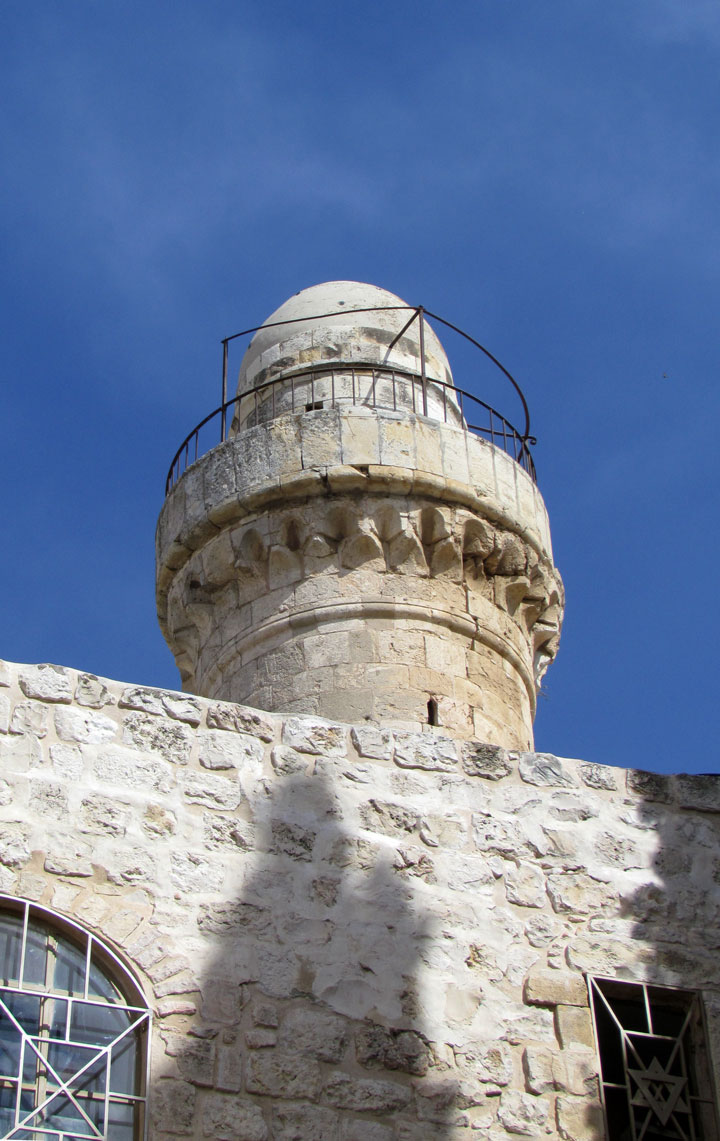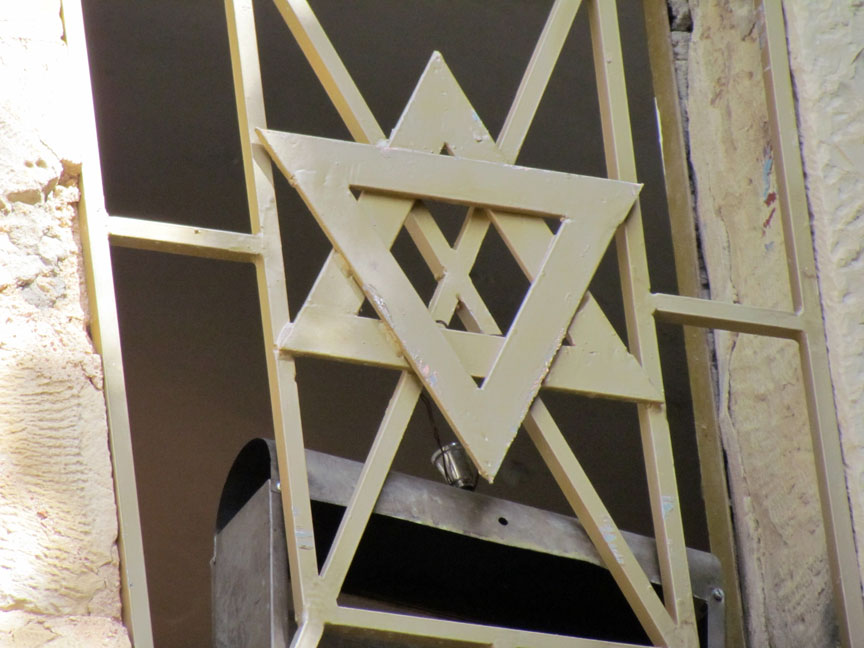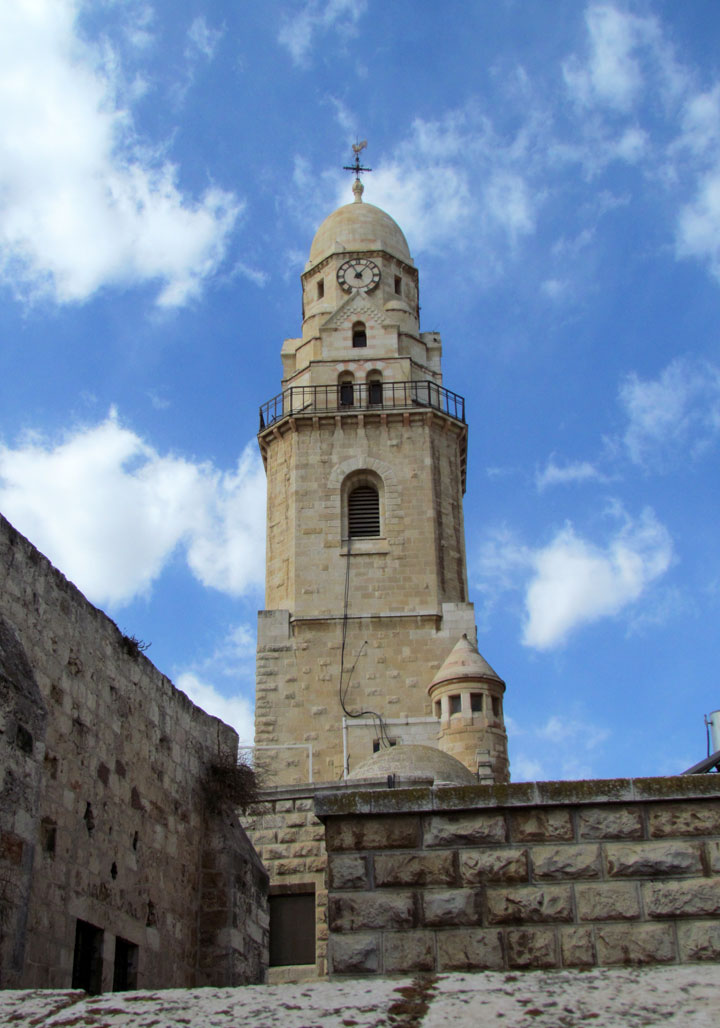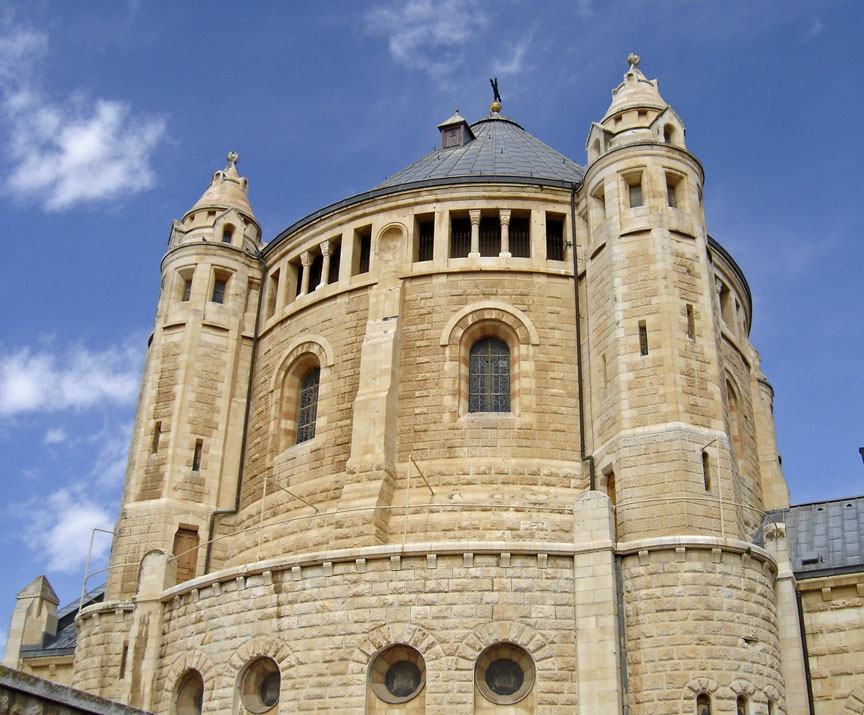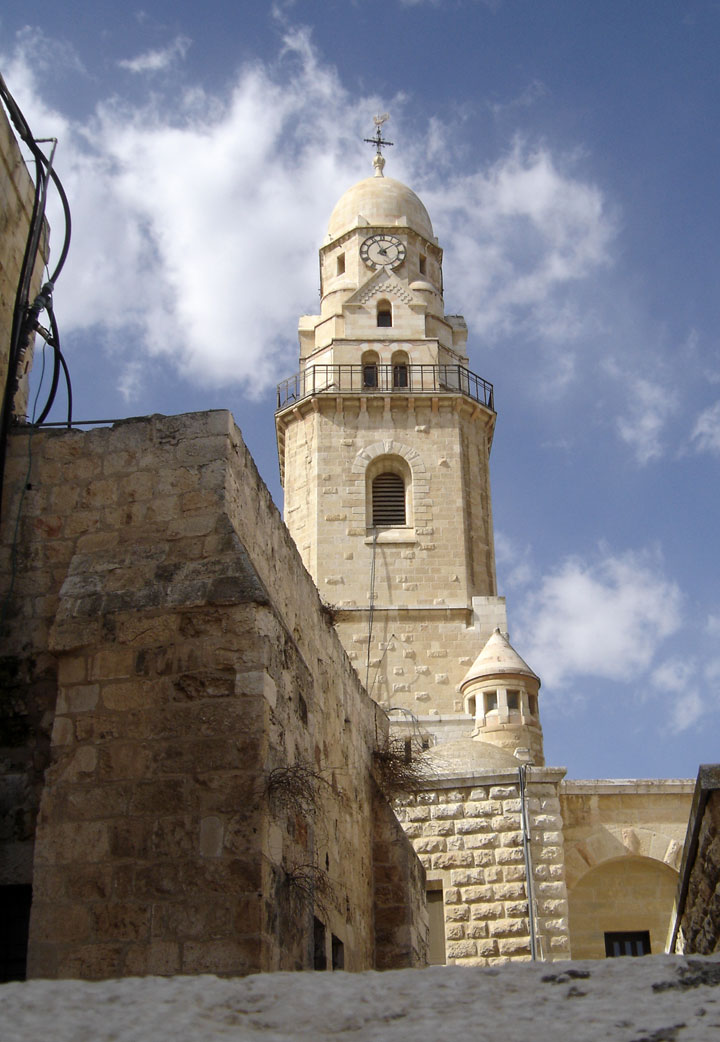

Upper Room

The Cenacle (from Latin cenaculum),
also known as the "Upper Room", is the term used for the site of The Last
Supper. The word is a derivative of the Latin word cena, which means dinner.

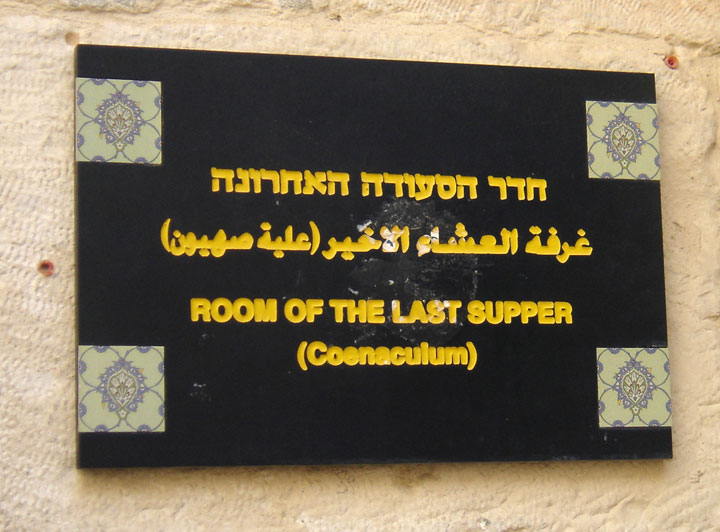
In Christian tradition, based on Acts 1:13, the "Upper Room" was not only the
site of the Last Supper (i.e. the Cenacle), but the usual place where the
Apostles stayed in Jerusalem, and according to the Catholic Encyclopedia "the
first Christian church".
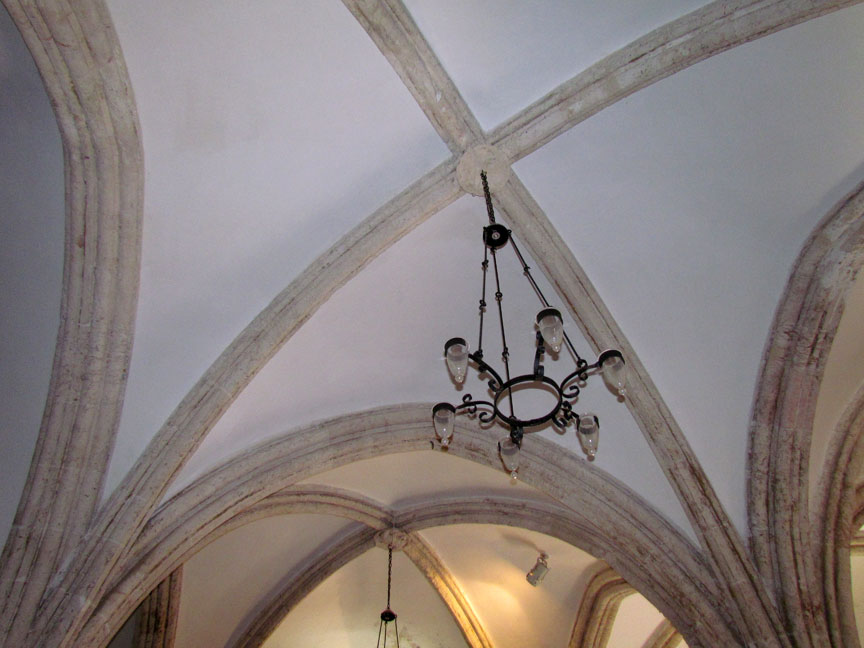
Thus the Cenacle is considered the site where many other events described in the
New Testament took place, such as:
* the Washing of the Feet
* some resurrection appearances of Jesus
* the gathering of the disciples after the Ascension of Jesus
* the election of Saint Matthias as apostle
* the descent of the Holy Spirit upon the disciples on the day of Pentecost
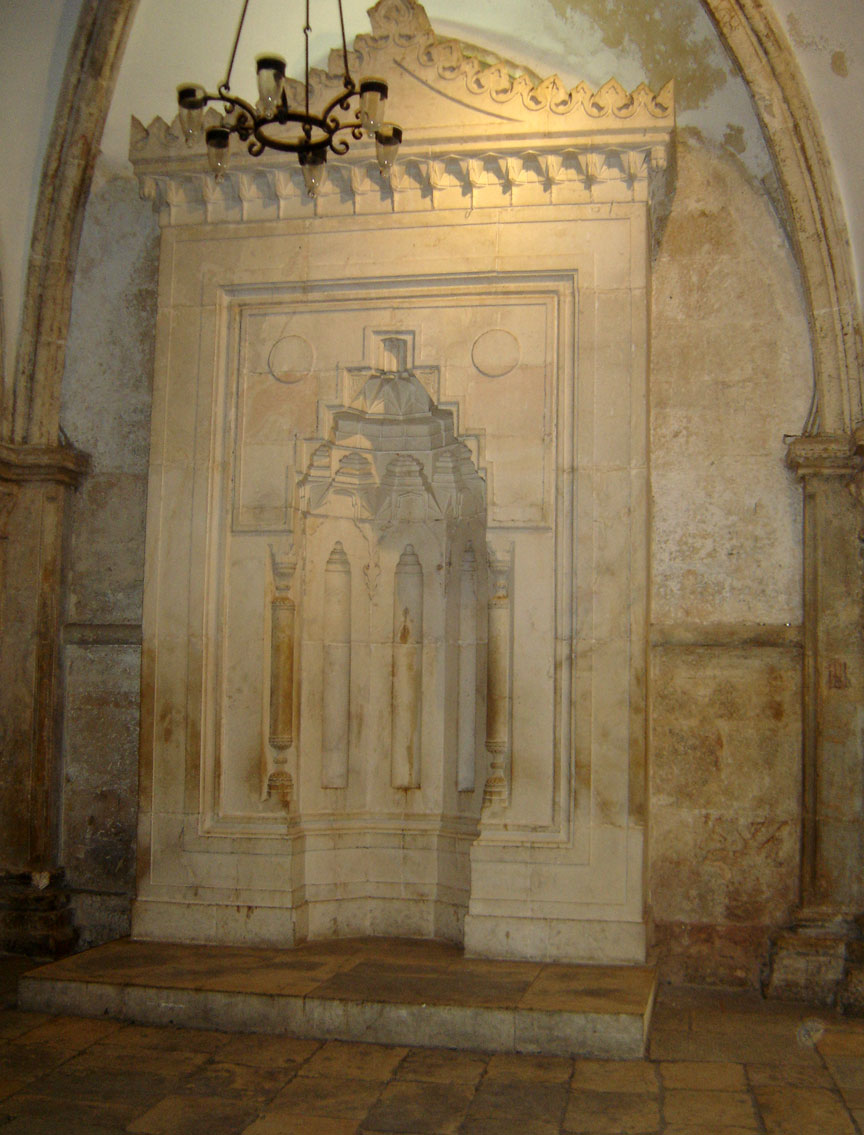
from its later use as a mosque
mihrab in the direction of Mecca
Since at least the fourth century CE a structure identified as the Cenacle, the site of the Last Supper, has been a popular Christian pilgrimage site on Mount Sion in Jerusalem. It is documented in the narratives of many early pilgrims such as Egeria, who visited in 384. The building has experienced numerous cycles of destruction and reconstruction, culminating in the Gothic structure which stands today.
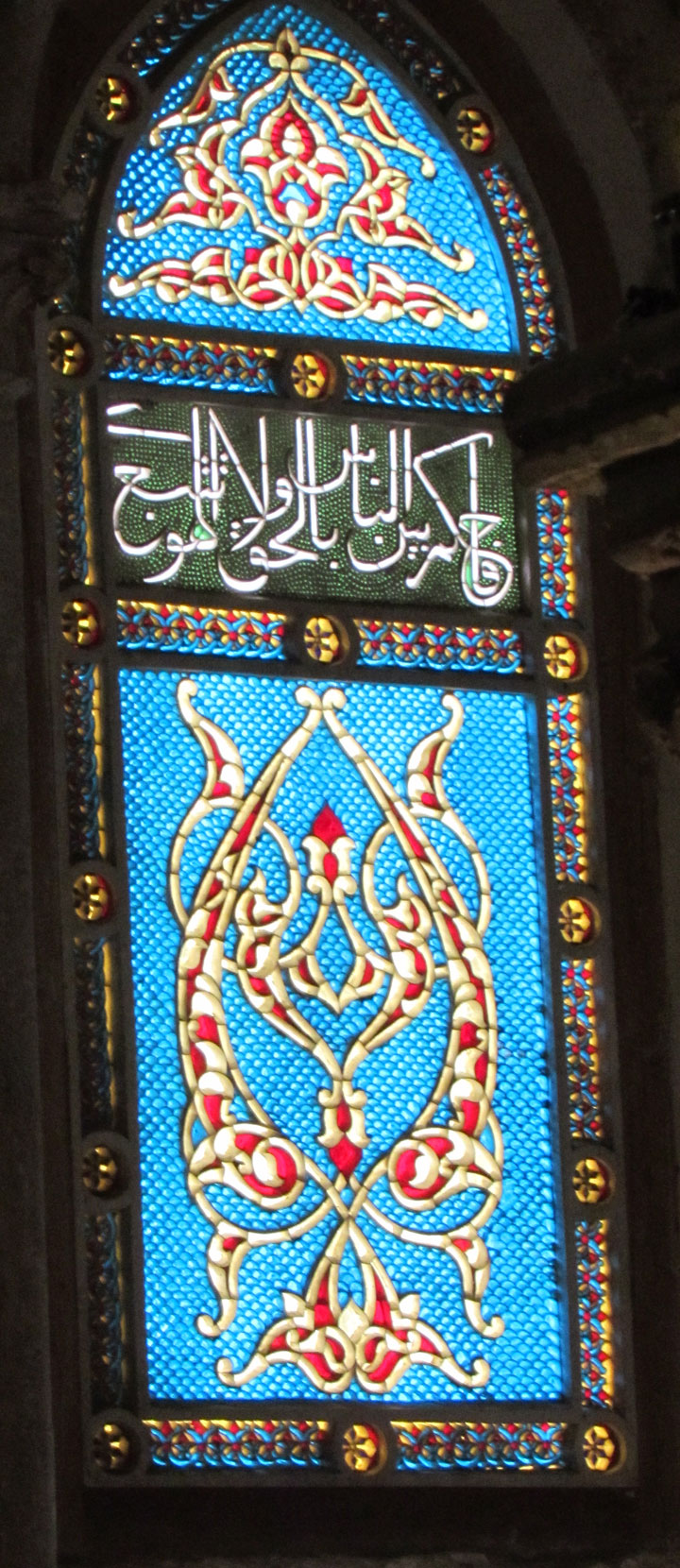
While the term “Cenacle” refers only to the “Upper Room,” the site is connected
to other points of interest, including a large cenotaph in the lower level, said
first by 12th century Crusaders to be the tomb of King David. However, most
scholars consider this attribution to be incorrect; 1 Kings 2:10 says that David
was buried “in the City of David,” an area of Jerusalem geographically disparate
from Mount Sion. The Cenacle is also connected to the Church of the Dormition.
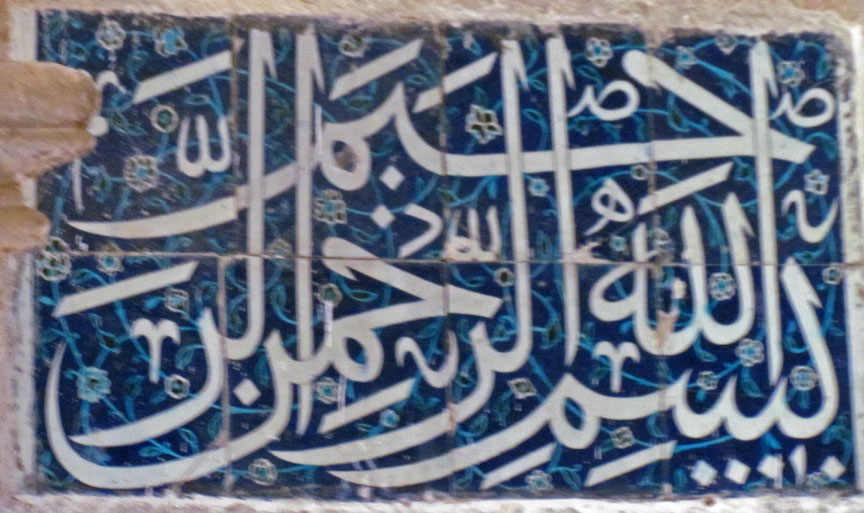
Arabic inscription prohibiting public prayer at the site
The early history of the Cenacle site is uncertain; scholars have made attempts at establishing a chronology based on archaeological evidence and historical sources. Biblical archaeologist Bargil Pixner offers these significant dates and events in the building's history.
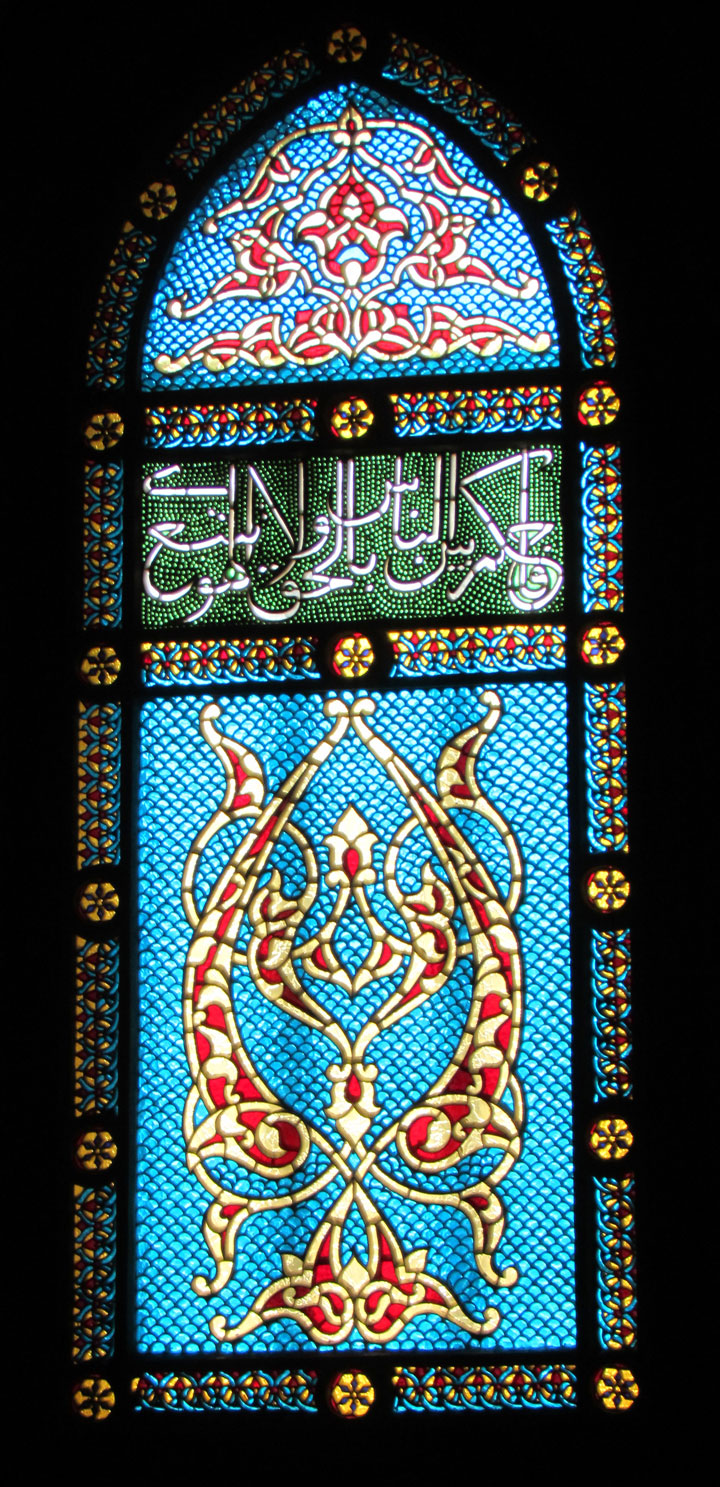
The original building was a synagogue later probably used by Jewish Christians.
According to the Catholic Encyclopedia, the building was spared during the
destruction of Jerusalem under Titus (AD 70), though Pixner thinks it was likely
rebuilt right after the war, and claims three walls of that structure are still
extant: the North, East and South walls of the present King David's Tomb. Roman
emperor Theodosius I built an octagonal church (the "Theodosian Church" or "Holy
Zion Church") aside the synagogue (that was named "Church of the Apostles"). The
Theodosian Church, probably started on 382 AD, was consecrated by John II,
Bishop of Jerusalem on 394 AD. Some years later, c. 415 AD, Bishop John II
enlarged the Holy Zion Church transforming it in a large rectangular basilica
with five naves, always aside the Church of the Apostles. This building was
later destroyed by Persian invaders in 614 AD and shortly after partially
rebuilt by patriarch Modestus. In 1009 AD the church was razed to the ground by
the Muslim caliph Al-Hakim and shortly after replaced by the Crusaders with a
five aisled basilica named for "Saint Mary". It is thought that the Cenacle
occupied a portion of two aisles on the right side of the altar.
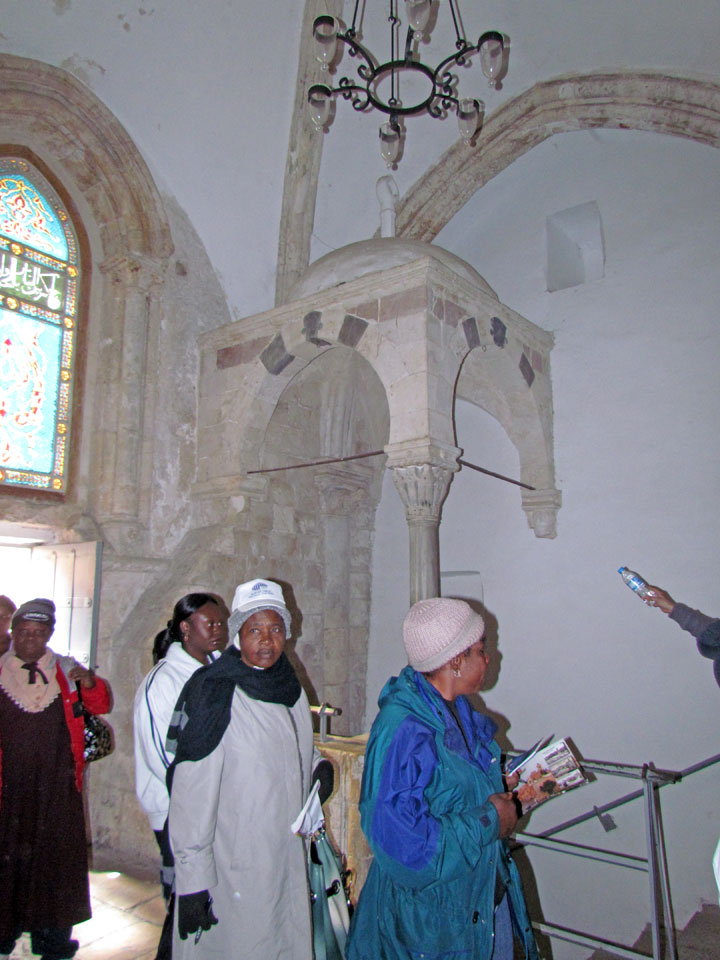
While the church was destroyed sometime after 1219, the Cenacle was spared. In
the 1340s, it passed into the custody of the Franciscan Order of Friars, who
maintained the structure until 1552, when the Ottoman Empire took possession of
it. After the Franciscan friars' eviction, this room was transformed into a
mosque, as evidenced by the mihrab in the direction of Mecca and an Arabic
inscription prohibiting public prayer at the site. Christians were not allowed
to return until the establishment of the State of Israel in 1948.
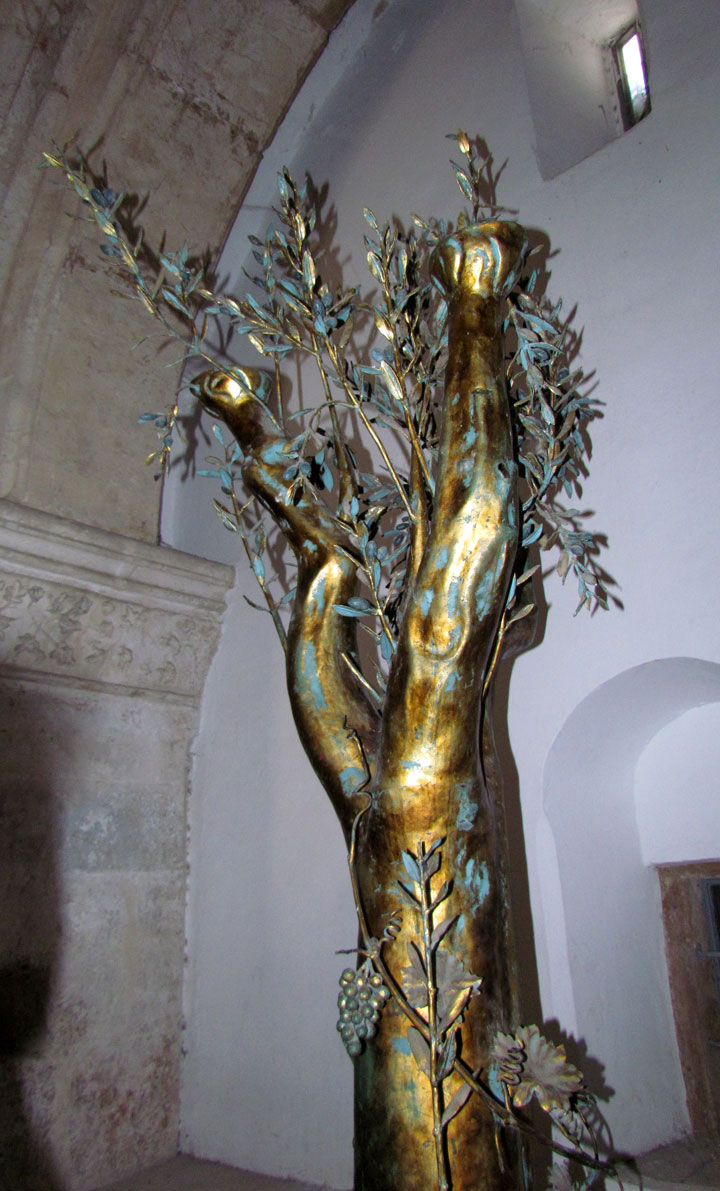
Scholars offer wide-ranging dates and builders for the surviving Gothic-style
Cenacle. Some believe that it was constructed by Crusaders just before Saladin’s
conquest of Jerusalem in 1187, while others attribute it to Holy Roman Emperor
Frederick II, after he arrived in the city in 1229. Still others hold that it
was not built in this form until the Franciscans acquired the site in the 1330s.
Scarce documentation and disturbed structural features offer little strong
support for any of these dates.
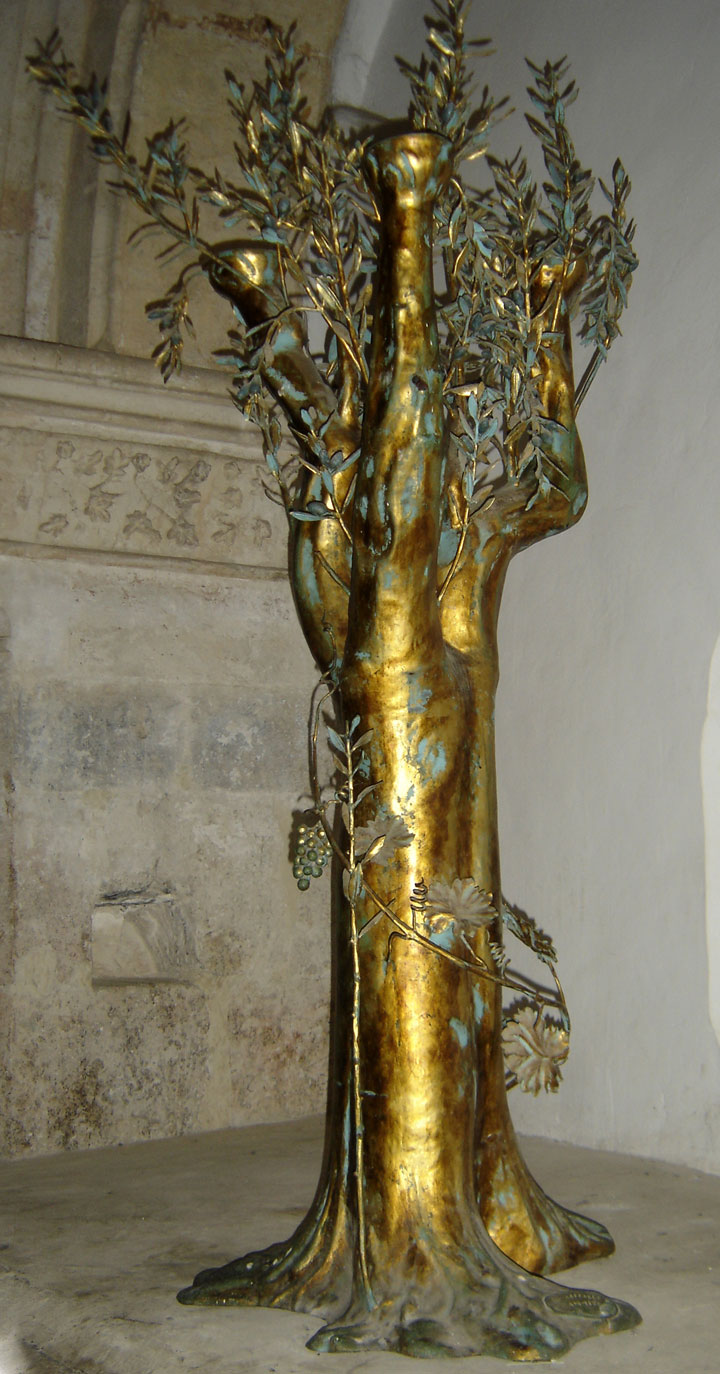
In its current state, the Cenacle is divided into six rib-vaulted bays. The bays
are supported by three freestanding columns which bilaterally divide the space,
as well as six pillars flanking the side walls. While the capital of the
westernmost freestanding column is flush with the Cenacle’s interior wall, the
column shaft itself is completely independent of the wall, leading scholars to
consider the possibility that this wall was not original to the building.
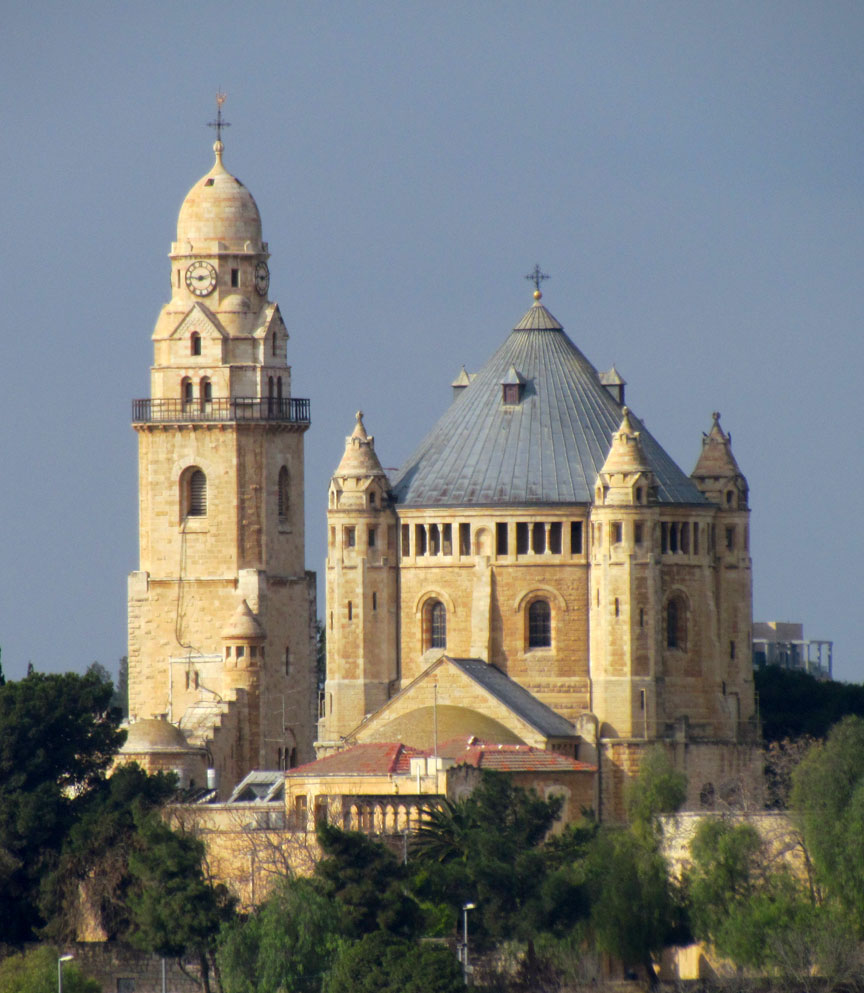
Church of the Dormition.
An analysis of the column and pillar capitals offers clues, but not a solution, to the mystery of the current building’s origin. The Corinthianesque capital between the second and third bays of the Cenacle is stylistically indicative of multiple geographical regions and chronological periods. This capital’s spiky leaves, which tightly adhere to the volume of the column before erupting into scrolls, are in congruence with common outputs of the 12th century sculpture workshop at the Temple site in Jerusalem in the last years before Saladin’s conquest in 1187. The workshop also frequently utilized drilling as an ornamental device. The Jerusalem workshop included artists from diverse regions in the West, who brought stylistic traits with them from their native countries. The workshop produced sculpture for many Crusader projects and other structures, such as the al-Aqsa mosque.
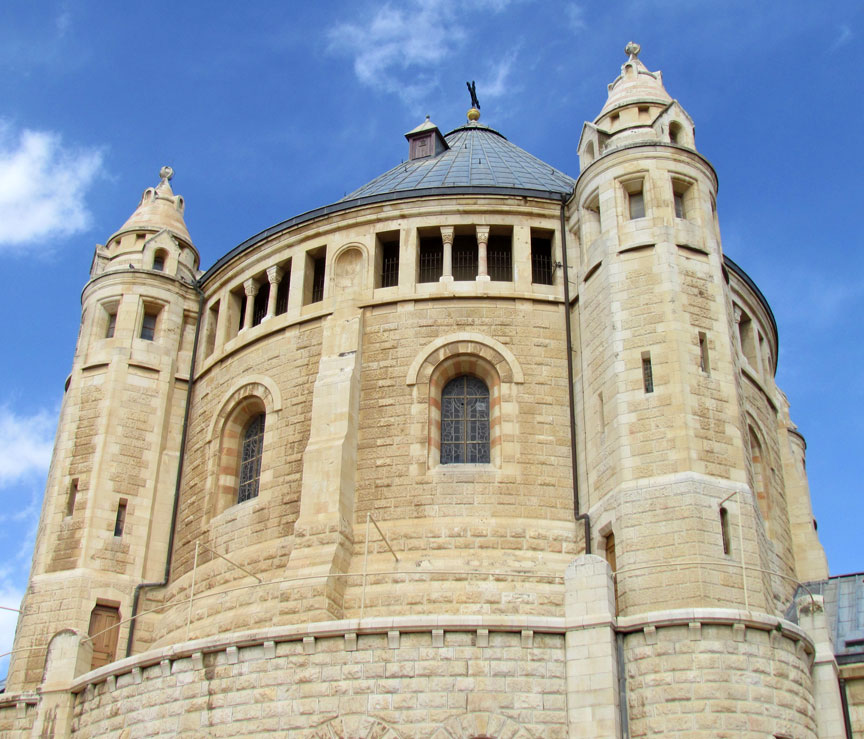
This comparison allows for the support of the 12th century date of the Cenacle.
There are also, however, similar capitals which originated in workshops in
southern Italy, a draw for scholars who wish to associate the building with Holy
Roman Emperor Frederick II and the Sixth Crusade in 1229. Examples can be seen
in the Romanesque cathedral in Bitanto, a small city near Bari, in southern
Italy, and on column supports of the pulpit in the Pisa Baptistery, carved by
Apulian-born sculptor Nicola Pisano around 1260.
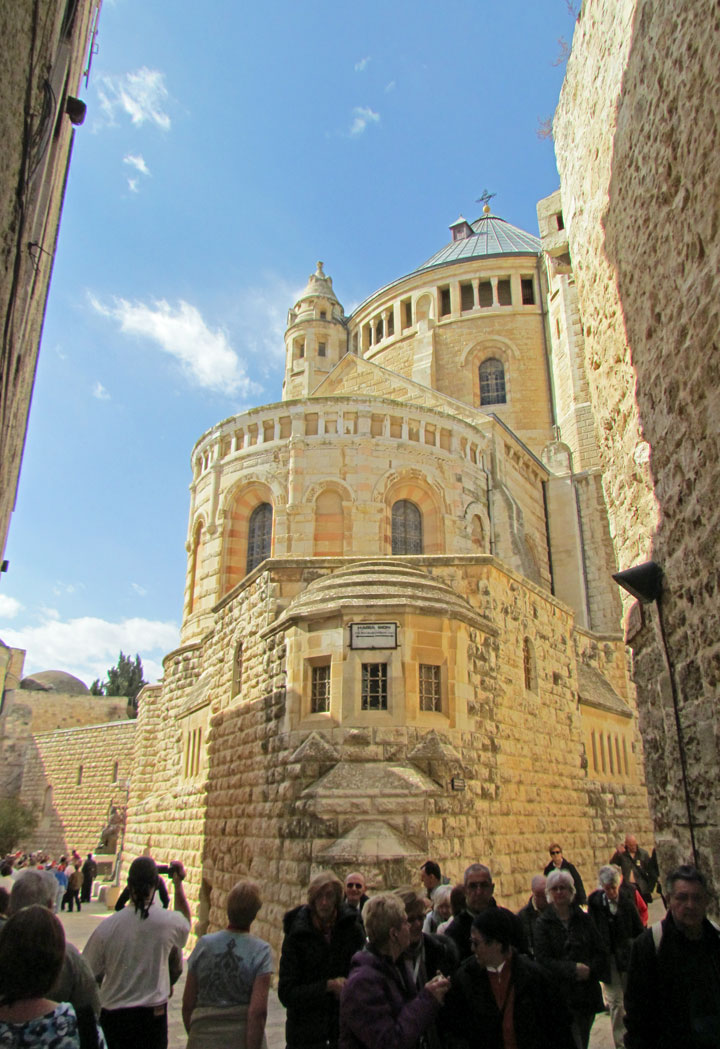
The capitals of the freestanding columns are not identical. The capital between
the first and second bays seems either severely weathered or shallowly carved,
and its volume is a marked contrast from the others. It rises from the shaft in
a straight cylinder, rather than in an inverted pyramid, and then flares only
just before it intersects with the abacus. The third capital, which now flanks
the Cenacle’s western wall, is also unique among the three. It is not decorated
with a floral motif, rather, scrolling crockets spring from the base of the
volume. Enlart has proposed a comparison to buildings constructed by Frederick
II in Apulia.

Analysis of these column capitals does not yield significant evidence to link
them to the 14th century and a potential Franciscan construction, nor does it
definitively date them to the 12th or 13th century. The building remains a
frustrating, but intriguing, mystery.
Text from Wikipedia
